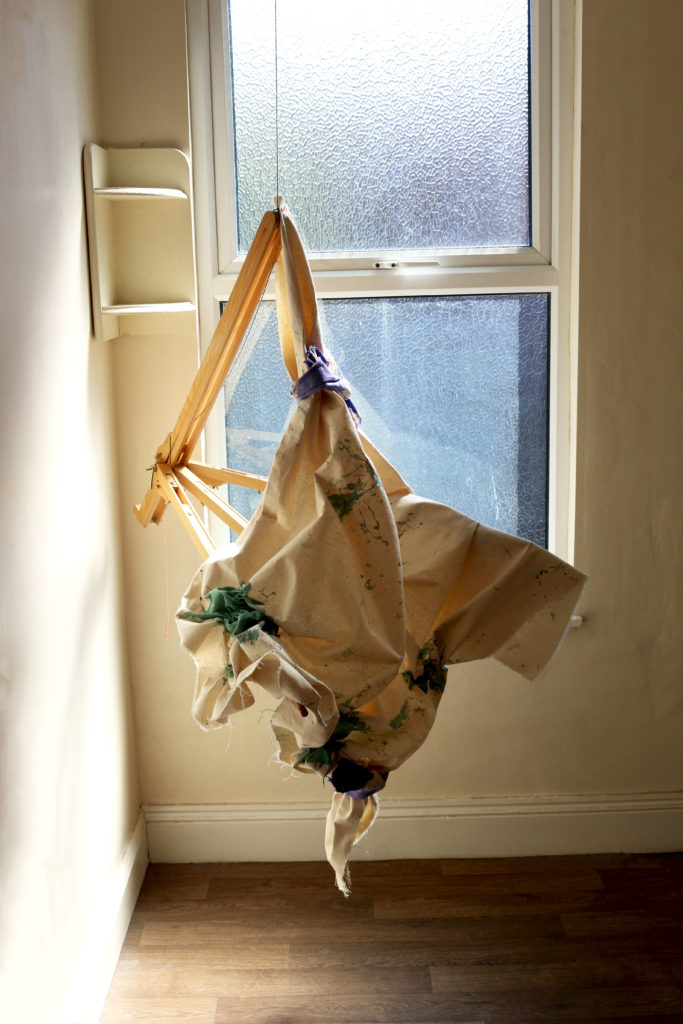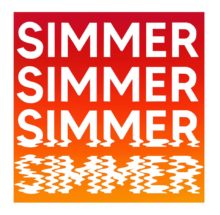
In my practice I transform the painted surface into a three-dimensional object suspended within space. My tangibles explore the hybridisation of painting and sculpture; pushing these two separate genres into one another. I work with canvas material removed from the stretcher support, borrowing a decorative sewing technique – ‘gathering’ – to manipulate the fabric. My finished pieces as a collection are called tangibles because they do not conform to the traditional perception of painting, they have a form and structure. They are not flat; they interact with a space. The space feels them, they are present, they are tangible.
The hierarchies of different approaches to making informed the origins of my ideas. I was drawn to the historic conflicts between art and object and art and craft. My tangibles are a combination of these practices, demonstrating how their interplay can aid rather than hinder the final outcome. Historically craft has been dismissed from art, however it is fundamental to my practice and something I believe is valuable to art in general. My work evolves through its making. Colour is the most significant part of the process because it informs the following stages. I pair small areas of colour with large expanses of unpainted canvas, paying particular attention to its heaviness on the material despite the fact it is diluted physically.
My work is heavily process driven, therefore my method of making takes precedent over the finished object. I dip and stain the fabric; then gather the areas that are coloured, with embroidery thread. This reflects the two opposing sides of my practice that are both haphazard and meticulous. Contrasts and disparities are regular in the composition of my work, not only between colours or fabrics, but particularly with regards to form. Certain areas are taut and stressed whilst others drape in swathes folding over one another. These contrasts create movement and texture across the tangibles surface, emphasising their materiality. Due to the gathering technique I have no control over the final shape of each piece. I don’t have a predetermined notion of how the tangible will look before it is made, the canvas does that for itself. Lately I have often thrown them onto the easel, not knowing exactly how they will land and causing them to display differently each time.
I recently reintroduced the notion of support back into my work. I began to realise it becoming critical to my tangibles again. I use my easel as a plinth-like device to further actualise the element of sculpture present in my pieces. I have been focussing upon how the tangibles situate themselves. They do not hang conventionally on the wall but rather shroud the repurposed easel frame, autonomous and liberated from the confines of flatness. I have experimented hanging the easel, positioned it on the floor, on its side and upside down, in an effort to strip it of its literal painterly connotations and act instead as purely a framework for my paintings – a stage for my tangibles to perform on.
Instagram: @no_vitamin_d
